 |
|
| Issue #113 • September/October, 2008 |
I’ll admit that it was the pastoral vision of a laundry line full of sun-bleached diapers above barefooted, rosy-cheeked, milk-fattened babies that first drew my attention toward cloth diapers. The idea of replacing an expensive disposable “necessity” most babies will use an average of 5000 diapers with a much cheaper reusable version appealed to my frugal nature, too.
|
Buying new cloth diapers is still pretty expensive up front, so I decided to sew my own. The first diapers I made more than four years ago were used by both of my children, and now I’ve given some of them to a friend for her daughter and newborn son.
Since those first diapering days I’ve learned a lot, talked to many other cloth-diapering families, made a lot of diapers, and made some mistakes, too. I’ll try to share some of what I’ve learned with you.
How many diapers you start with is completely dependent on how often you want to wash your diapers. We started off with two dozen diapers when our daughter was born, but if I had to do it again I’d start with at least three dozen for a newborn. I had to wash a load of diapers every single day, or risk running out. As your baby gets older he’ll use fewer diapers each day, but it’s still nice to have enough so you can go a day or two without washing.

What are they made of?
Any fabric that absorbs liquid will work, but some fibers are better suited than others. Cotton, linen, and hemp are all natural fibers which absorb well. Included among these are birdseye, diaper twill, flannel, jersey and interlock (t-shirt fabric), terry cloth (bath towels) and stretch terry, and cotton and hemp fleece (not polyester polar fleece, that’s different). You can get most of these fabrics from the stores listed in the resource guide at the end of this article.
Liquid absorbing microfiber towels (not those advertised for dusting), usually sold as shop towels also work very well as absorbent layers, even though they’re synthetics.
You’ll need good quality elastic, too. Something that will stand up to lots of hot-water washing and detergent is best, like swimwear elastic.
Using recycled fabric
Don’t discount the possibility of using old clothes, towels, and other found fabric to make diapers. I made a huge set of diapers out of a set of ugly queen-size flannel sheets and an old cotton bath towel, and the only cost was for the elastic and snaps, about $10 total. T-shirts also make cute diapers; center the pattern of the t-shirt on the “bottom” of the diaper, and use the sleeves as extra absorbent layers.
When scavenging for soaker materials, look for items with a high percentage of cotton. The outside of the diaper can be just about any kind of fabric, as long as it can stand up to repeated washing. The layer next to baby’s bottom can be anything soft that doesn’t repel moisture.
Fasteners
|
There are a number of ways you can keep these diapers on your baby.
If you have a few diaper pins, then by all means use them. Not many babies can figure out how to undo them to escape their diapers. Use a bar of soap as a “pin cushion” for your diaper pins, and you’ll have a much easier time pinning your diapers. If you’re too nervous about poking your baby, there are a number of other options available.
For self-fastening diapers, your options are plastic (polyacetal resin) snaps, or hook and loop tape (Velcro, Aplix, and Touch Tape are a few brand names).
Everyone has a preference I really like plastic snaps, to the point that I’ve invested in a snap press (about $60) and replaced all of my velcro diapers with snap diapers. But, I realize not everyone wants to invest in a press, so the pattern I’ll give you uses hook and loop tape. It is easy to sew on or repair at home without special equipment, makes for a more adjustable diaper, and is easy to find at your local fabric store.
Washing diapers
Washing diapers is easy! Don’t let anyone tell you otherwise. It takes hardly any time out of my day.
Here’s our basic routine. We “dry pail” our diapers, which means after each diaper change we shake any solids into the toilet, then put the diaper in a laundry basket with no water until we have enough for a load of laundry. You can sprinkle a little baking soda in the pail to help neutralize odors, if you find it necessary.
When it’s time to run the load, usually every other day, I first run a cold rinse with plain water only no detergent. Then I run a long hot wash with about ½ the recommended amount of detergent and a scoop of oxygen based bleach, like Oxy-clean or Oxy-boost. That’s it! After that, the diapers should smell super clean clean enough that you can stick your nose right into them for a big fresh-smelling whiff and they go into the dryer or out on the laundry line.
Don’t use regular bleach too often, or you’ll find that your diapers begin to deteriorate quickly. If you feel that you’re having sanitation problems, then by all means use it, but for stains, I find that sunshine is the best remedy of all.
Washing trouble
Sometimes, no matter how many times you wash the diapers, they just smell funny, or cause diaper rash, or look dirty. It can be a trick diagnosing the issue, but it usually comes down to one of two things (or a combination of both): detergent not rinsing out of your diapers all the way, or the pH of the diapers not being balanced. Either of these things can cause diaper rash, strong smell, and premature disintegration of your diapers, so the quicker you solve these problems, the happier everyone will be. The detergent problem is easy to resolve. Just continue rinsing the diapers until there are no suds left in the washer at all. Try reducing the amount of detergent you use, or switching detergents, too. If you have a severe detergent build up, you might have to run your diapers through several plain water wash cycles to get it all out. Diapers are one instance where you don’t want to use any sort of laundry soap, because it will always leave a bit of residue behind.
|
The other problem, which can take some more time to figure out, is unbalanced pH level of your diapers. I’m no chemist, but I’ll try to explain it a little. pH is the measure of how acidic or basic something is. It ranges from 0-14, with pure water considered neutral, at a pH of 7. That’s the number we’re shooting for here, too. Numbers lower than 7 indicate that a compound is acidic, and higher numbers indicate a basic makeup. The things that affect the pH of your diapers include the water you wash them in, the detergent you use, and your baby’s waste. It’s easy to find out the pH of your diapers with litmus paper. It’s cheap, and you can usually find it at a pool supply store. Or you can order it from Edmund Scientifics (1-800-728-6999, or www.scientificsonline.com). Just place the litmus paper on a wet diaper to get a reading. Once you know what pH you’re starting with, you’ll know whether you need to add vinegar (acid) or baking soda (basic) to every load of diaper laundry to keep the pH balanced. (If your diapers are very acidic, try using washing soda instead it is even more basic than baking soda.)
Using the pattern
I’ve included a half pattern for a basic diaper pattern that you’ll have to trace in order to make a full pattern. As printed, the pattern will make a newborn-sized diaper. To make a larger or smaller diaper, enlarge the pattern using the diaper size chart as a guideline. (You can also download a file that includes the full pattern in sizes from Newborn up to Toddler from my blog: ../blogs/Bramblestitches.)
Babies vary greatly in size, and they grow ridiculously fast, so these are just guidelines. Your three month old may already be big enough to wear 6-12 month diapers, and tall thin children may stay in smaller sizes longer.
A basic fitted diaper
If you want to try out cloth diapers without making a big investment, here’s a great pattern for you. This pattern can be made with a regular sewing machine, and all of the materials are inexpensive and should be easy to scavenge or find at your local fabric store. Another feature of these diapers is that they’re easy to wash and dry, because they’re fairly trim, with only three layers of flannel and one or two layers of toweling. The extra absorbency comes from a lay-in doubler an additional piece of toweling or absorbent cloth that folds up and sits inside the diaper. I remember the very first diapers I ever made took three hours in the dryer. Nobody can afford that kind of utility bill every month, not to mention the backed up laundry it caused. These can dry in a regular cycle with no problem, and in just a few hours on the clothesline (even in very humid North Carolina).
You’ll need:
- cotton flannel, or other fabric for the outside, inside, and in-between layers
- terry cloth, an old cotton bath towel, or other absorbent fabric for the “soaker” layer
- 1 package of ¼” wide elastic
- 1 package hook and loop tape. You’ll need about 10″ of “loop” and 2″ of “hook” for the small size.
- thread
First, trace the half pattern so that you’re working with a full diaper pattern. Cut three pieces of your main fabric from the pattern, and two pieces of terry or toweling from the soaker pattern piece.
Your three pieces of flannel are for the outside, the in-between layer, and the inside.
|
The soaker is sewn to the in-between layer. Center the rectangles of terry cloth on the diaper, and sew in place with a zig-zag stitch or medium-length straight stitch.
Now you’ll assemble the diaper. Layer your three diaper pieces as follows: inside layer face up, then outside layer face down, then in-between layer with soaker facing up. Pin around the edge, and sew ¼” from the edge, leaving about a four-inch wide gap along the front edge of the diaper for turning.
Now you’ll sew on the elastic. How long your elastic is depends on how stretchy it is and how chubby or thin your baby is. A good starting point for small diapers is 4″ for each piece of elastic. Tack each end of elastic down at the elastic marks in the seam allowance. When you have all three pieces of elastic sewn on, turn the diaper right side out, and pin around the edge. Pin the front turning hole closed, and stretch the elastic areas as you pin. When you sew around the edge, you don’t want to catch the elastic again, so push the elastic right up to the edge of the diaper before you pin.
Now you’ll topstitch around the entire diaper, closing the front turning hole at the same time. Where there is no elastic, stitch close to the edge, about 1/8″ away, and where there is elastic, stitch just on the other side of the elastic, about 5/8″ away from the edge of the diaper. Don’t sew through the elastic as you stitch; the idea is to make a casing for the elastic so it can move and stretch freely.
Next, attach your velcro. Cut a piece of loop velcro to fit the front of the diaper right up to the edges. Round the corners just a little bit so they won’t poke baby. Sew onto the outside front with a zig-zag stitch. Cut two pieces of hook and two pieces of loop about 1-1½” each for the back tabs. Sew to the inside back edges with a zig-zag stitch. The extra piece of loop here is so you can fold the hook back before washing. This will help keep the hook part lint-free, and will also help keep your diapers from all sticking to each other in the laundry and becoming a “diaper snake.”
Diaper doublers
Since these diapers are designed to be fairly thin and easy to wash, you’ll probably want to make a batch of diaper doublers, too. Doublers are like an extra soaker that can be folded and placed inside the diaper to increase the diaper’s absorbency. I make mine out of one layer of bath towel and one layer of flannel or t-shirt. Cut your doubler pieces the length of your soaker and three times wider. With right sides together, stitch all the way around the edge, leaving a few inches unsewn for turning. Turn the doubler right side out, then top stitch all around, closing the turning hole as you stitch. Sew two more straight lines through the center of the doubler to separate it into thirds. To use, just fold the doubler in thirds and lay inside the diaper.
Make a diaper cover
Unless you like having a damp-bottomed baby sitting on your lap, you’ll probably want a few diaper covers.
|
My favorite diaper covers are made out of old, thin wool sweaters from the thrift store. Choose a sweater that is fairly thin and soft, and at least 80% wool. Machine wash and dry the sweater a time or two to felt it a little. This way you can cut into it and not worry about it coming unravelled at the edge, and it will make it easier to care for in the future.
Use the same pattern you used for your diapers, but add about two inches to the width of the pattern. The extra stretch in the sweater fabric or fleece will also help to make up the extra length needed to fit over a diaper. Cut two pieces for the diaper cover using the pattern.
The cover is assembled just like a diaper, except there is no “hidden layer” or soaker. With right sides together, sew around the edge of the cover, leaving a hole for turning. Sew on your elastic as if you were making a diaper. Turn the cover right side out, pin, and topstitch around the edge, remembering to sew on the otherside of the elastic at the back and leg edges. Add velcro and you’re done!
Allow the soaker to thoroughly dry and air out between uses. When soiled, wash gently by hand and let air dry.
Diaper wipes
If you’re going to make your own cloth diapers, you may as well make some washable cloth diaper wipes, too. You can make them any size you like, but I find between six and eight inches square to be the most useful size. These can be as rudimentary or fancy as you like. You could simply cut a washcloth into quarters and call it done. Or sew around a layer of terry toweling and a layer of flannel right sides together, turn them right side out, and topstitch around the edge for some very high-class wipes.

More information
There are volumes of information on the internet about cloth diapering, but unfortunately not too many printed books on the subject. What I learned, I did by trial and error and by wading through the thousands of electronic documents out there.
I hope your experience with cloth diapering is a good one, made better by saving your family a good chunk of change, and the satisfaction that comes from making something with your own two hands. Good luck!


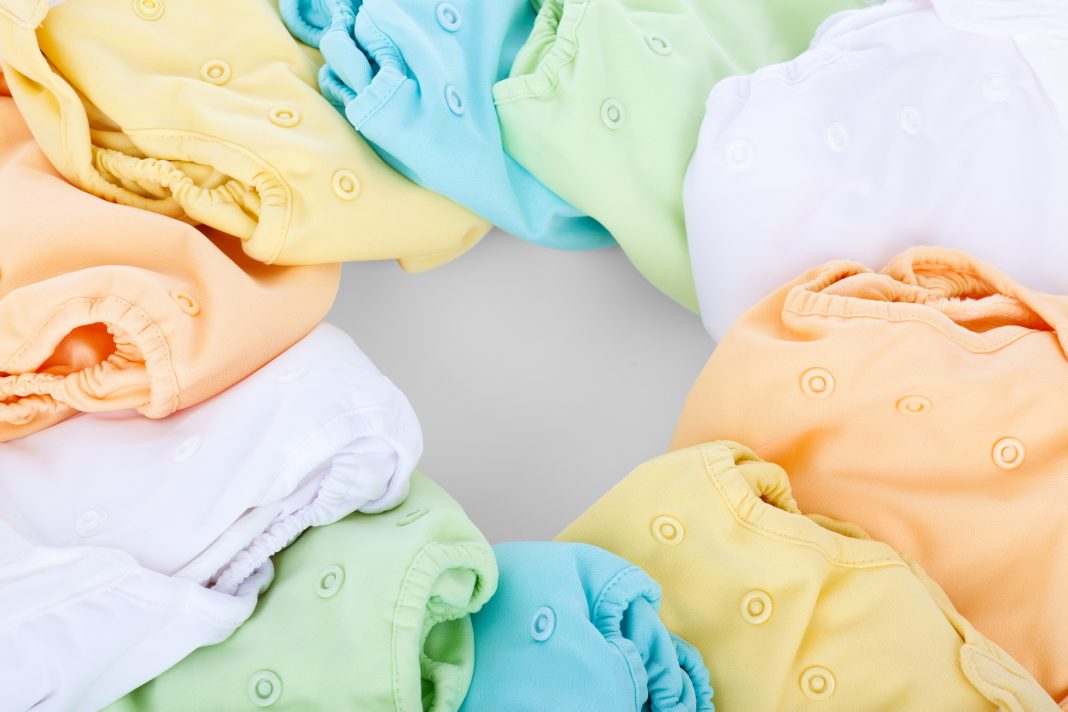








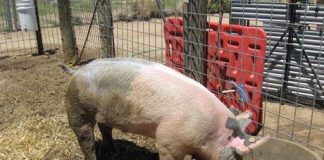
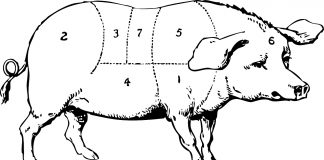




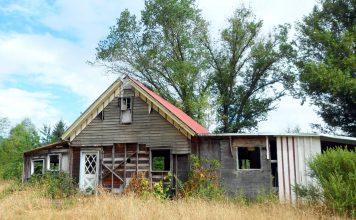

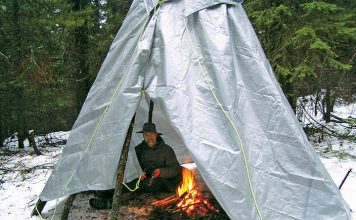
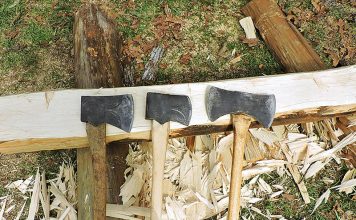
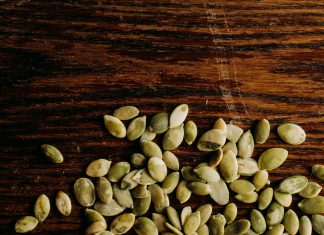

You forgot to mention that a wool diaper cover needs to be lanolised. Cheers for the rest
The multisize pattern doesn’t appear to have 10 to 25 lbs. Also, is there a pattern piece for the soaker that is attached to the middle piece of flannel? If not, I couldn’t see any guidelines for measurements.
Thanks
To Joan Troester,
Yes, Diaper covers are to keep wet diapers from making a mess until the diaper can be changed. The plastic pants I used on my child in the 80s are a type of Diaper Cover still available today online. They are made by Gerber and Dappi. Nowadays many more expensive diaper (and I hope more durable) covers are made with PUL. You can buy these covers from a number of makers. (Make sure you are getting a cover, and not one lined in cloth that you have to change with every diaper.) There are also patterns and books on how to make them, and the PUL material is available at JoAnne’s and online.
Joan,
yeah I assume this is the case as the diapers themselves wouldn’t be waterproof. I plan on making the outside layer of these diapers from “PUL” (polyurethane lined fabric) sold at JoAnn fabrics and Amazon, it’s a waterproof option that comes in cute colors. It also eliminates the need for the covers.
Is a diaper cover to replace the typical plastic pants? If not, do you make plastic pants or buy them?